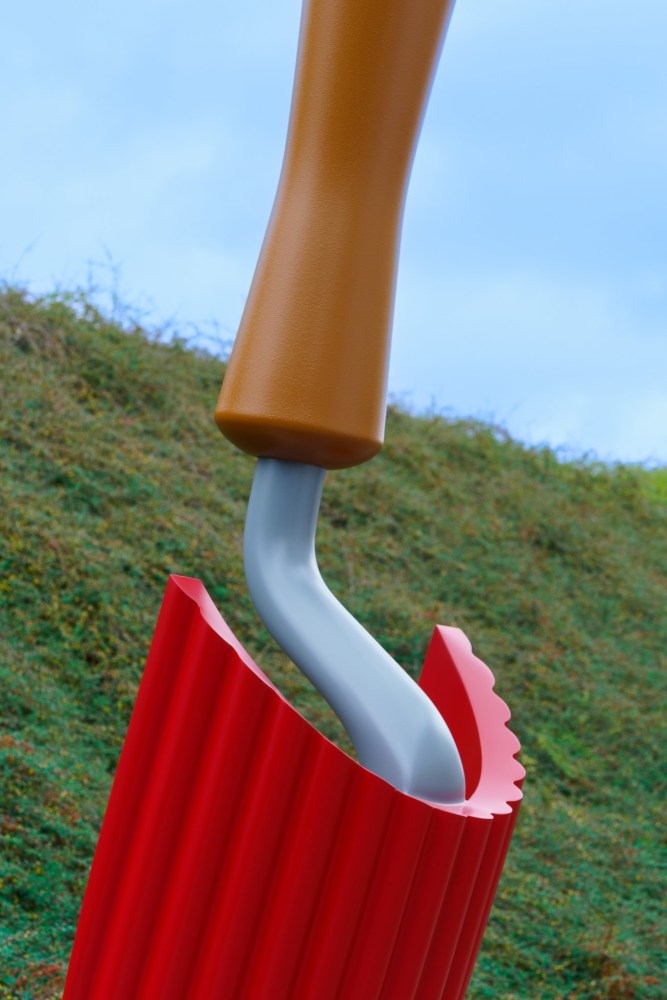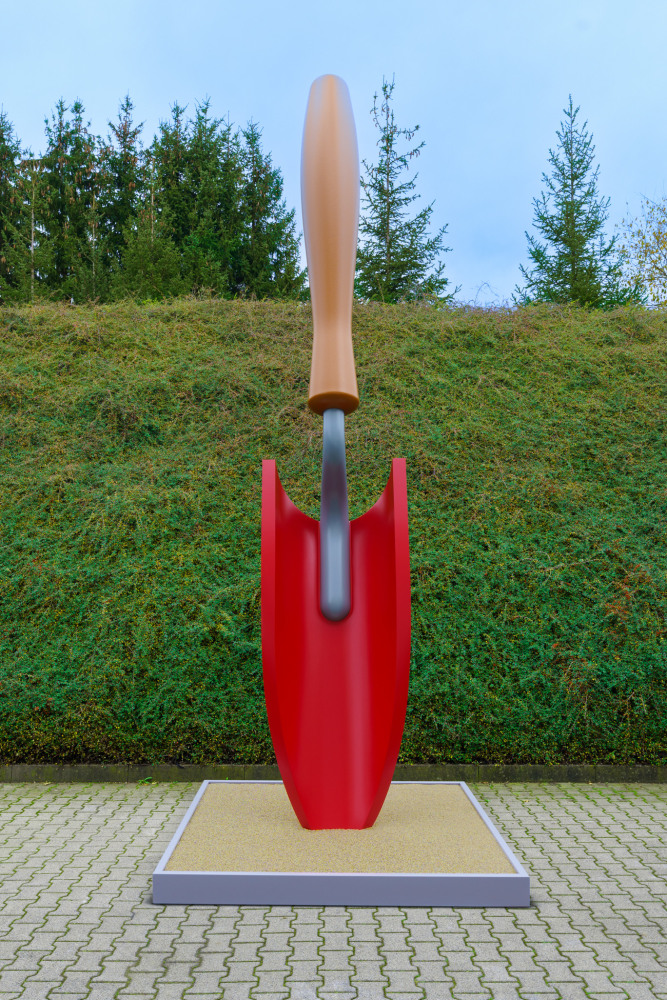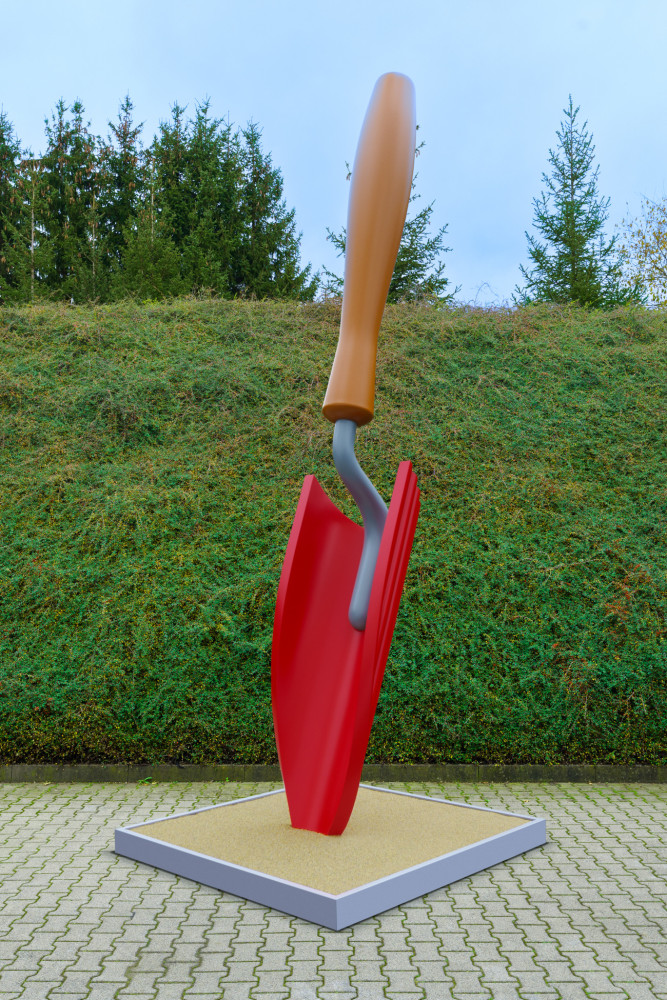Plantoir, Red (Mid-scale), a sculpture by Claes Oldenburg and Coosje van Bruggen, is the centerpiece of Paula Cooper Gallery’s booth at Art Basel Miami Beach in 2023.
Husband-and-wife team Oldenburg (1929–2022) and van Bruggen (1942–2009) are celebrated for their large-scale sculptures of ordinary objects that take pleasure in the forms found in everyday life. Delving into the fruit bowl, the toolshed and the toybox for familiar shapes and colors, the artists enlarged and animated their selected objects, fixing them in moments of energetic motion. Plantoir is a humble gardening tool that stands upright, its point submerged in the ground as if it had just fallen out of the sky.
Oldenburg was working on Trowel when he and van Bruggen met in 1970, and the work became the couple’s first collaboration in 1975, when van Bruggen selected a blue finish borrowed from Dutch workers’ overalls to replace the original silver at the time of the work’s restoration. The couple revisited the form with Plantoir in 2001 after van Bruggen began work on an ambitious ecologically minded landscaping project in the grounds of the couple’s French property. Reinterpreting the simple tool, Plantoir suggests the possibility of growth as it descends into receptive soil.
A large version of Plantoir, Red was displayed on the roof of the Metropolitan Museum of Art in 2002. Editions of Plantoir, Red are permanently installed at the Fundacao de Serralves, Porto, Portugal and the Frederik Meijer Gardens & Sculpture Park, Grand Rapids, MI. Versions of Plantoir, Blue were installed at Rockefeller Center in the spring of 2022, at The University of Texas Southwestern Medical Center, Dallas, in 2023, and at the Qatar National Collection in Doha in 2023.
Claes Oldenburg (b. 1929-2022, Stockholm) moved to New York City in 1956, where he established himself as a pivotal figure in American art. Oldenburg’s initial interest in Happenings, performance art, and installation—including such seminal works as The Street (1960) and The Store (1961)—soon evolved into a concentration on single sculptures. Working with ordinary, everyday objects, he went on to develop “soft” sculpture and fantastic proposals for civic monuments. In 1969, Oldenburg took up fabrication on a large scale with Lipstick (Ascending) on Caterpillar Tracks installed on the Yale University campus. From 1976 until 2009 he worked in partnership with his wife, Coosje van Bruggen, executing countless large-scale projects for various public settings around the world. Oldenburg was honored with a one-person exhibition of his work at the Museum of Modern Art, New York, in 1969, and with a retrospective organized by the National Gallery of Art, Washington, D.C., and the Solomon R. Guggenheim Museum, New York, in 1995. His work is represented in collections including the Museum of Modern Art, New York; the Whitney Museum of American Art, New York; the Los Angeles County Museum of Modern Art; and the Centre Pompidou, Paris.
Coosje van Bruggen received a master’s degree in art history from the University of Groningen. From 1967 to 1971 she worked in the curatorial department of the Stedelijk Museum in Amsterdam and was co-editor of the Sonsbeek 71 catalogue. Van Bruggen was a member of the selection committee for Documenta 7 in Kassel, Germany (1982), a contributor to Artforum (1983–88) and Senior Critic in the Department of Sculpture at Yale University School of Art (1996–97). She authored books on Claes Oldenburg’s early work as well as on John Baldessari, Hanne Darboven, Bruce Nauman and the architect Frank O. Gehry. In 1978 van Bruggen moved to New York, where she collaborated with Oldenburg on large-scale, site-specific works in urban settings, smaller-scale park and garden sculptures and indoor installations. Van Bruggen passed away in Los Angeles in 2009.






